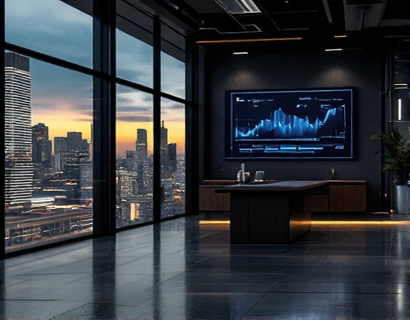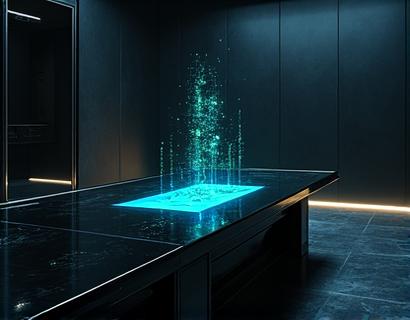Effortless Visual Creation: Mastering Online Graphic Design with Intuitive Tools
In the digital age, the ability to create compelling visual content is more crucial than ever. Whether you are a seasoned graphic designer or a novice looking to enhance your brand's online presence, the tools at your disposal can significantly impact your success. This article delves into the world of intuitive online graphic design platforms, exploring how these tools can unlock your creative potential and streamline your content creation process.
The Importance of Visual Content in Digital Marketing
Visual content plays a pivotal role in digital marketing. Studies have shown that content with visuals receives higher engagement rates compared to text-only content. Eye-catching graphics, social media posts, and marketing materials not only capture attention but also help in conveying messages more effectively. In a crowded digital space, a strong visual identity can set your brand apart and leave a lasting impression on your audience.
Challenges in Traditional Graphic Design
Traditional graphic design, while powerful, often requires extensive skills, time, and expensive software. For many, these barriers can be daunting, limiting their ability to create high-quality visual content. The learning curve associated with professional design tools can be steep, and the cost of software licenses can add up quickly. Moreover, the process of designing from scratch can be time-consuming, leaving little room for creativity and experimentation.
The Rise of Intuitive Online Design Platforms
To address these challenges, a new generation of online graphic design platforms has emerged. These platforms are designed to be user-friendly, accessible, and powerful, catering to both novices and experts. They offer a range of features that simplify the design process, making it possible to create professional-grade visuals with ease. Let's explore some of the key benefits and features of these intuitive tools.
User-Friendly Interfaces
One of the most significant advantages of modern online design platforms is their intuitive user interfaces. These platforms are built with the user in mind, ensuring that even those with minimal design experience can navigate the tools with confidence. Drag-and-drop functionality, clear menus, and well-organized panels make it easy to find and use design elements without extensive training.
For example, many platforms offer a visual editor where you can see the results of your changes in real-time. This immediate feedback loop helps you experiment and refine your designs quickly, fostering a more creative and iterative process.
Customizable Templates
Customizable templates are a game-changer for designers of all levels. These templates provide a solid foundation for your designs, saving time and ensuring consistency in your branding. Whether you're creating social media posts, blog headers, or marketing brochures, templates offer a starting point that you can easily tailor to your needs.
Many platforms offer a wide range of templates, covering various industries and purposes. You can choose from templates designed for specific platforms like Instagram, Facebook, or Pinterest, ensuring that your content is optimized for each channel. Additionally, templates can be customized with your brand colors, logos, and text, allowing for a seamless integration of your brand identity.
Rich Library of Design Elements
A robust library of design elements is another key feature of intuitive online design platforms. These libraries include a vast array of graphics, icons, fonts, and backgrounds that you can use to enhance your designs. High-quality, professionally created assets ensure that your visuals look polished and professional, even if you're not a skilled designer.
The design elements are often categorized and searchable, making it easy to find what you need. Many platforms also offer premium libraries with additional, high-end assets for those who want to elevate their designs further. This extensive collection of elements can inspire creativity and help you avoid design fatigue.
Collaboration and Sharing Features
Collaboration is increasingly important in the digital age, and modern design platforms recognize this need. Many platforms offer built-in collaboration tools that allow multiple users to work on the same project simultaneously. This feature is particularly useful for teams or businesses where multiple stakeholders are involved in the design process.
Sharing your designs is also streamlined, with options to export files in various formats and resolutions. You can easily share links or downloadable files with clients, team members, or social media followers. Some platforms even integrate directly with popular project management tools, making it seamless to incorporate design work into your workflow.
Responsive Design and Cross-Platform Compatibility
In today's multi-device world, ensuring that your designs look great on any screen is crucial. Intuitive online design platforms prioritize responsive design, allowing you to create visuals that adapt seamlessly to different devices and screen sizes. This ensures that your content is consistent and effective, whether viewed on a desktop, tablet, or smartphone.
Cross-platform compatibility is another important aspect. Many platforms support a wide range of file formats and output options, making it easy to use your designs across various channels and mediums. Whether you need vectors for logos, high-resolution images for print, or optimized files for web, these platforms have you covered.
Integration with Other Tools and Services
Integration with other tools and services is a significant advantage of modern design platforms. Many offer seamless integration with social media platforms, content management systems, and email marketing tools. This integration simplifies the workflow, allowing you to publish your designs directly from the design platform to your chosen channels.
For instance, some platforms allow you to schedule social media posts directly from the design interface, ensuring that your content goes live at the optimal times. This level of integration not only saves time but also ensures consistency across all your digital touchpoints.
Continuous Learning and Community Support
Learning to use a new design tool can be daunting, but many intuitive platforms offer resources to help you get started. Tutorials, video guides, and community forums provide valuable support and inspiration. These resources are particularly helpful for beginners who are new to graphic design, as they can learn at their own pace and from the experiences of others.
Active communities around these platforms foster a sense of belonging and collaboration. You can share your work, get feedback, and learn from fellow designers. This community aspect can be a powerful motivator, encouraging you to experiment and improve your skills continuously.
Enhancing Brand Visual Identity
One of the primary goals of using an intuitive online design platform is to enhance your brand's visual identity. Consistent and high-quality visuals are essential for building brand recognition and trust. With these tools, you can create a cohesive look and feel across all your brand's touchpoints, from website headers to social media profiles.
Customizable templates and design elements allow you to maintain brand consistency while still expressing creativity. For example, you can create a set of brand guidelines within the platform, ensuring that all team members use the same assets and styles. This consistency helps reinforce your brand message and strengthens your brand's presence in the market.
Boosting Creativity and Efficiency
By streamlining the design process, intuitive online platforms boost both creativity and efficiency. The ease of use and availability of high-quality assets mean that you can spend more time focusing on the creative aspects of your work. This freedom to experiment and explore different design ideas can lead to more innovative and impactful visuals.
Moreover, the time-saving features of these platforms allow you to produce more content in less time. This efficiency is particularly beneficial for businesses and individuals with tight deadlines or high-volume content needs. You can maintain a consistent flow of fresh, engaging content without compromising on quality.
Case Studies and Real-World Applications
To better understand the impact of intuitive design platforms, let's look at some real-world applications. A small business owner, for instance, used a design platform to create a new social media campaign. With the platform's templates and design elements, they were able to produce a series of eye-catching posts in a matter of hours. The campaign resulted in a significant increase in engagement and followers, demonstrating the platform's effectiveness.
Another example is a marketing agency that adopted an intuitive design tool for client projects. The agency reported a reduction in design time by over 50%, allowing them to take on more projects without compromising on quality. The collaboration features also improved teamwork, leading to more cohesive and client-approved designs.
Future Trends in Online Graphic Design
As technology continues to evolve, the future of online graphic design is exciting. Artificial intelligence and machine learning are beginning to play a role in design tools, offering features like automated design suggestions and personalized template recommendations. These advancements can further enhance the design process, making it even more intuitive and efficient.
Additionally, the rise of no-code and low-code platforms means that more people without traditional design skills can participate in the creative process. This democratization of design tools is likely to continue, opening up new opportunities for innovation and creativity.
Conclusion
Intuitive online graphic design platforms have revolutionized the way we create visual content. By providing user-friendly interfaces, customizable templates, rich libraries of design elements, and seamless integration with other tools, these platforms empower both novices and experts to produce stunning visuals with ease. Whether you're looking to enhance your brand's presence, boost your creativity, or save time on design tasks, these tools offer a powerful solution.
Embracing these platforms can transform your content creation process, helping you stand out in the digital space and achieve your goals more effectively. As the tools continue to evolve, the possibilities for creative expression and brand building will only grow.










































